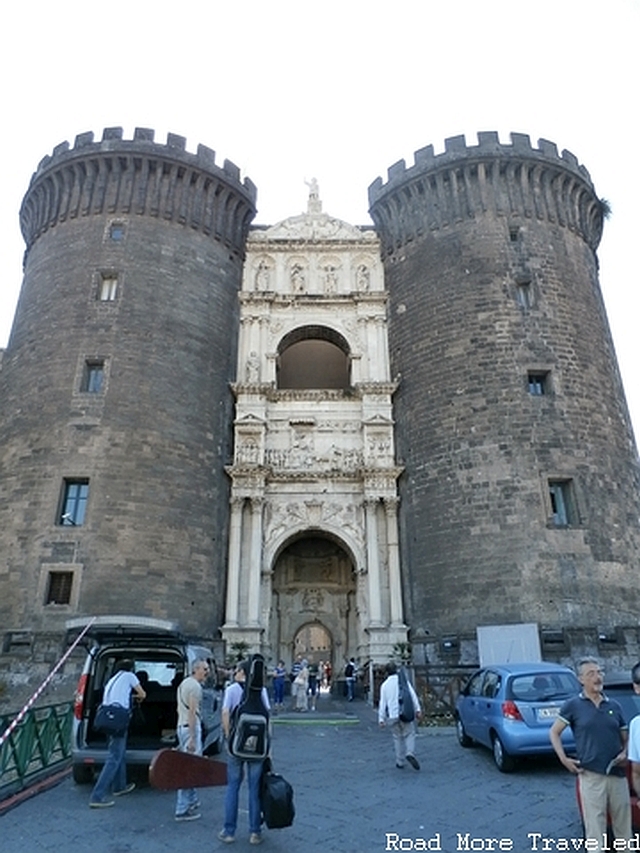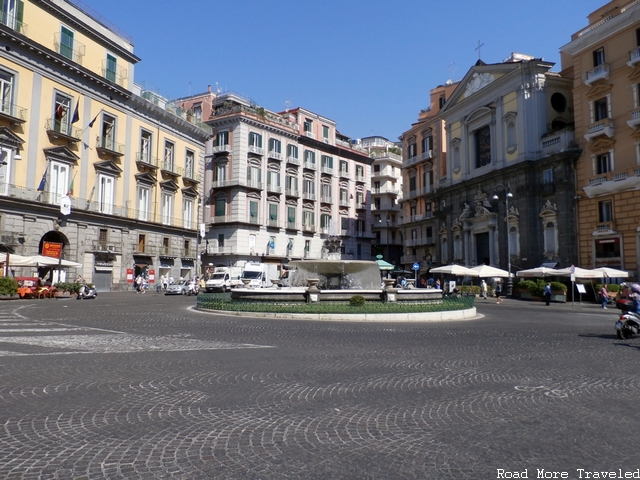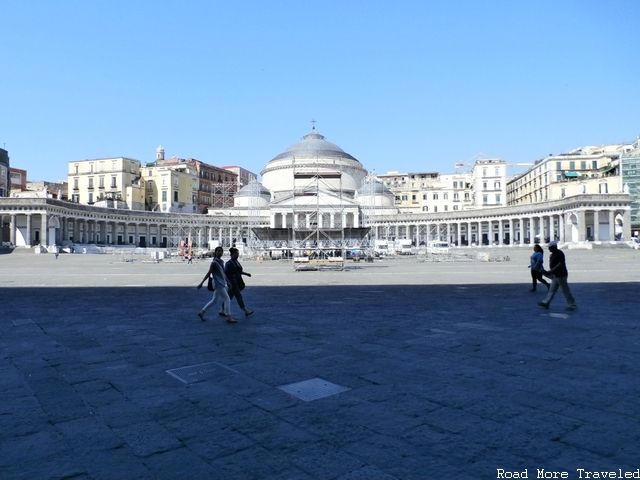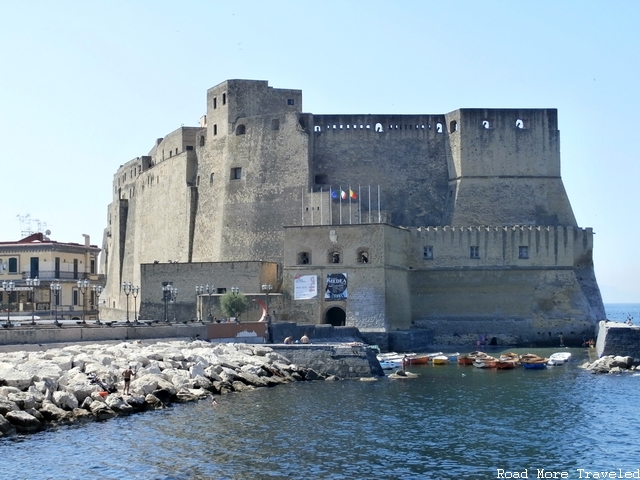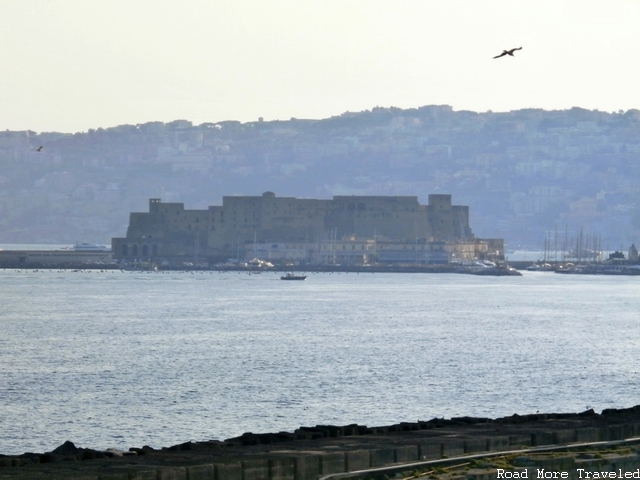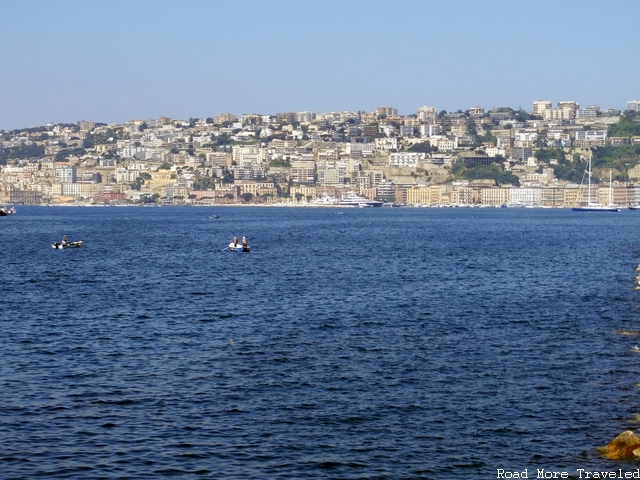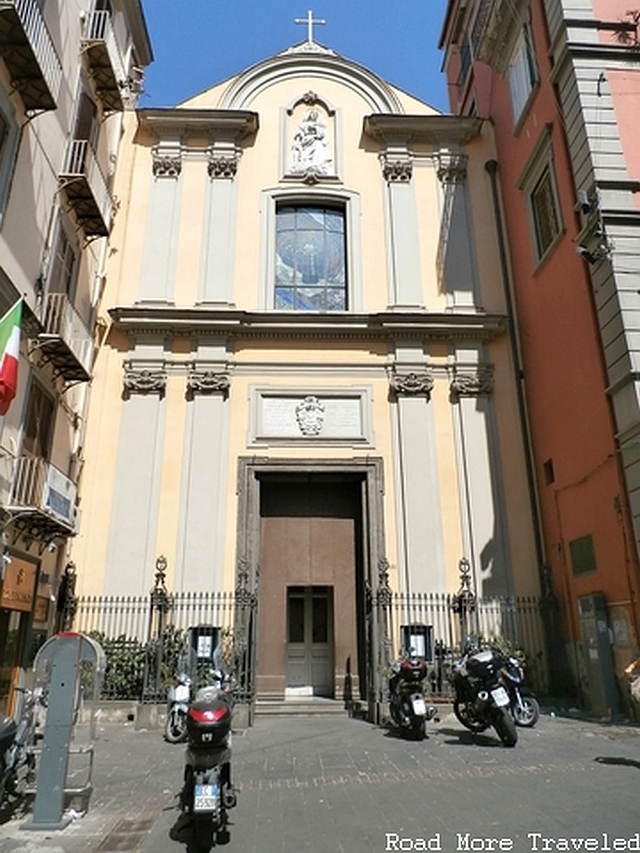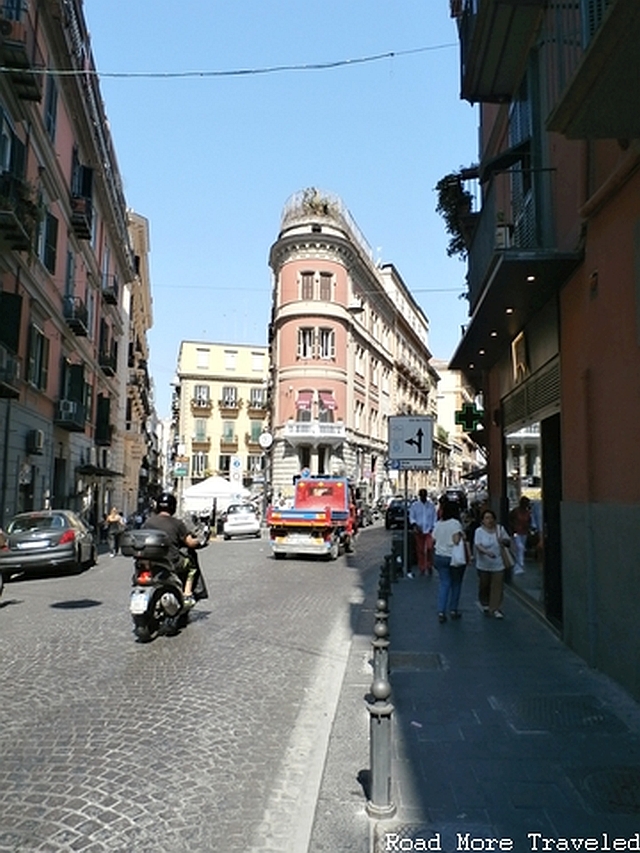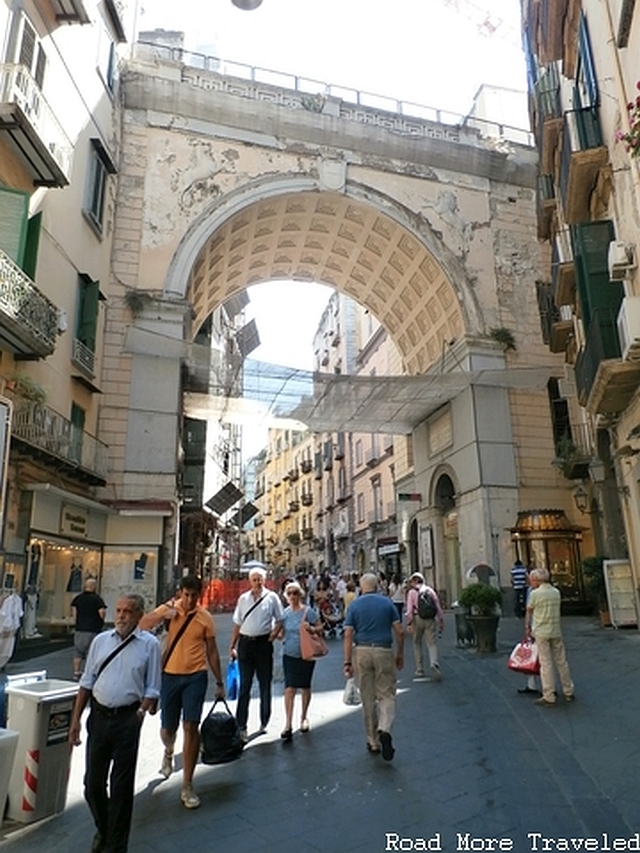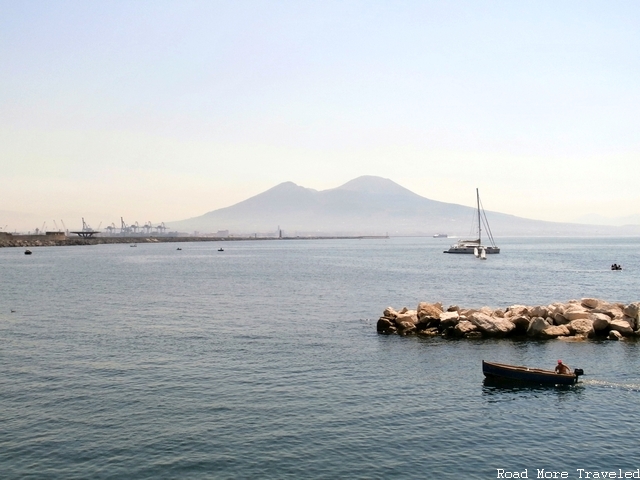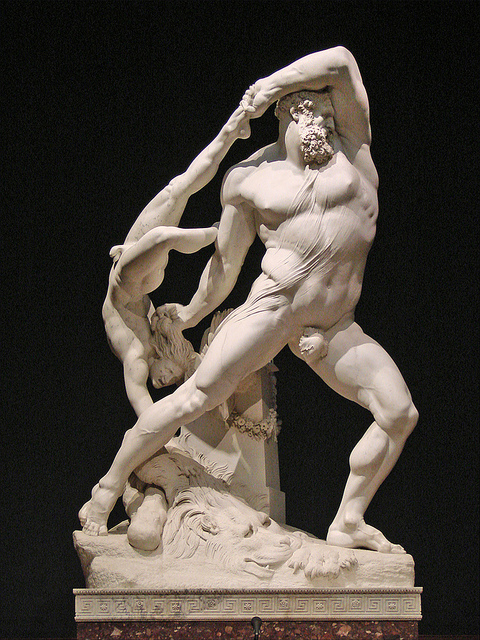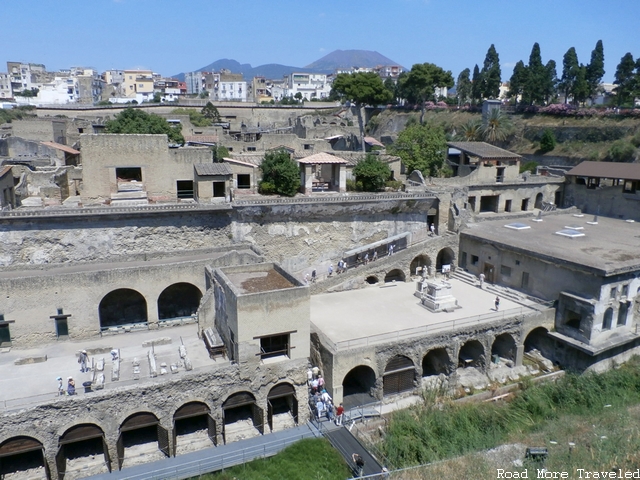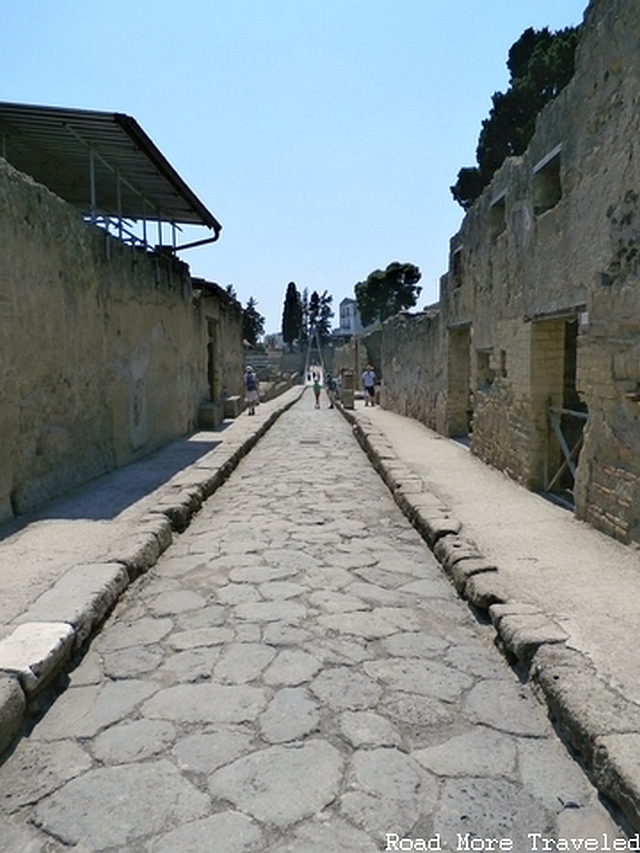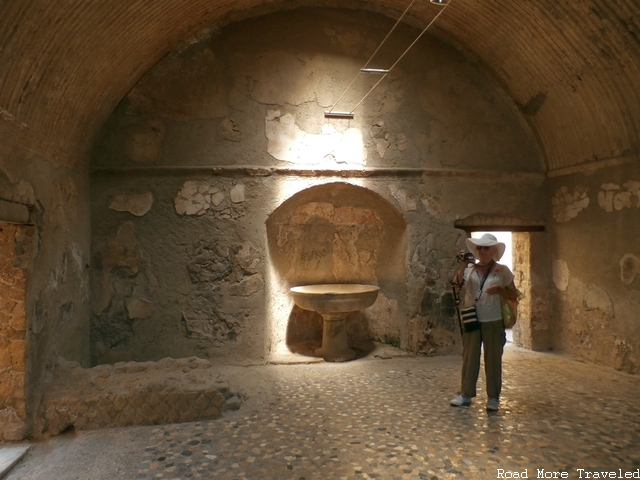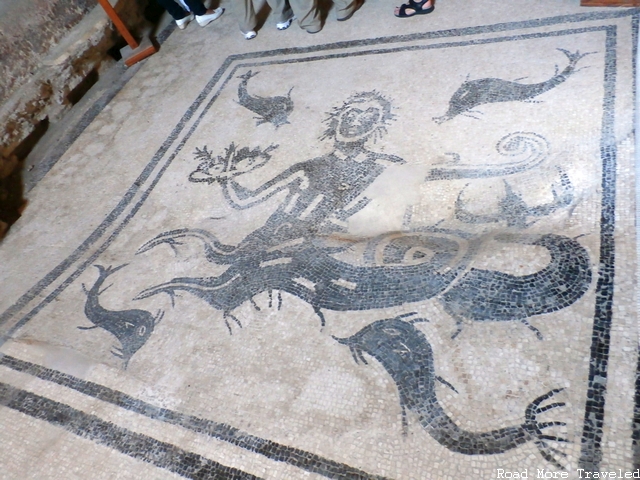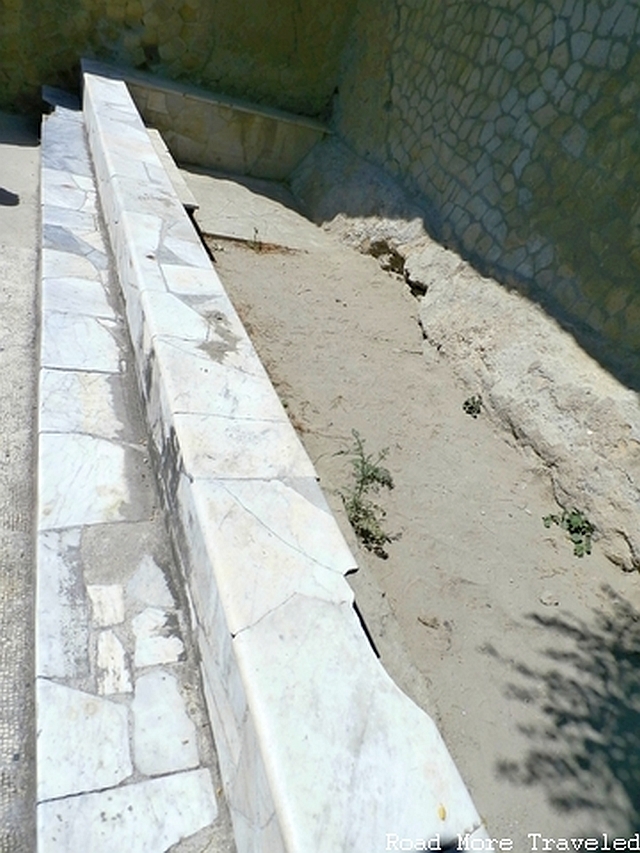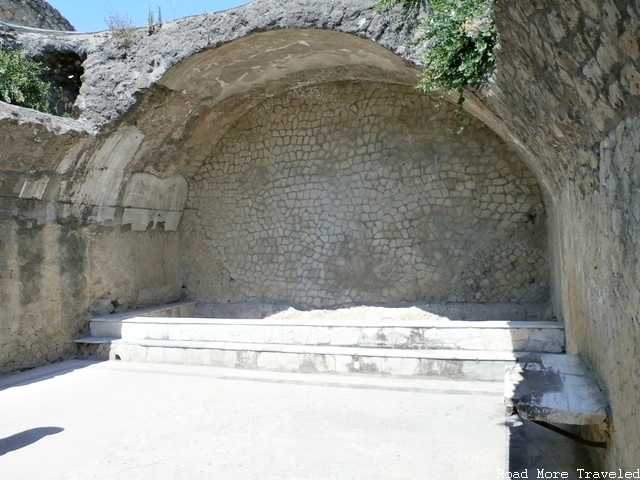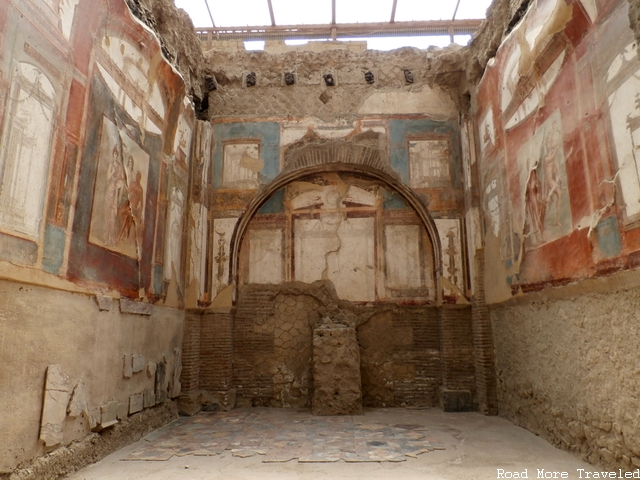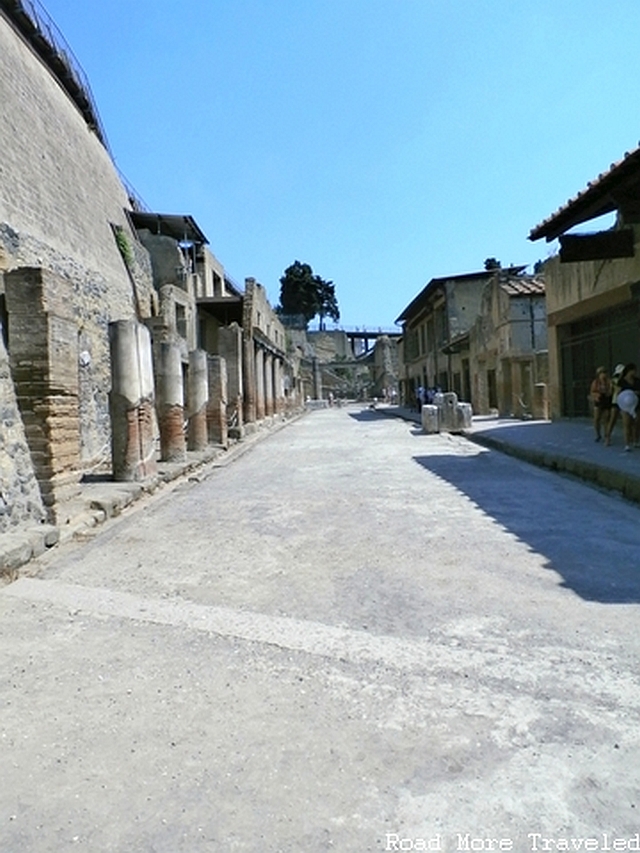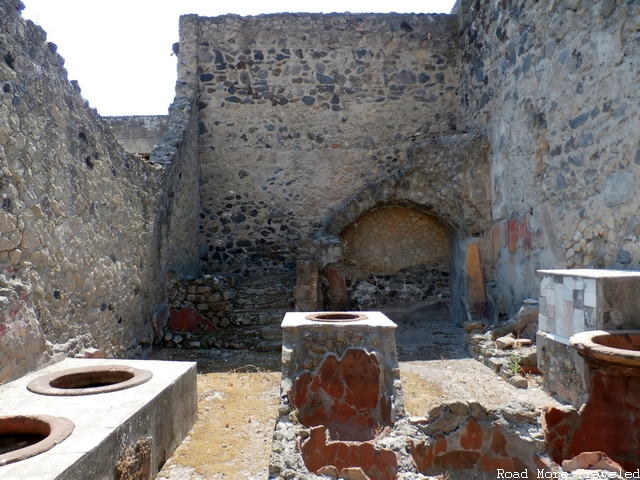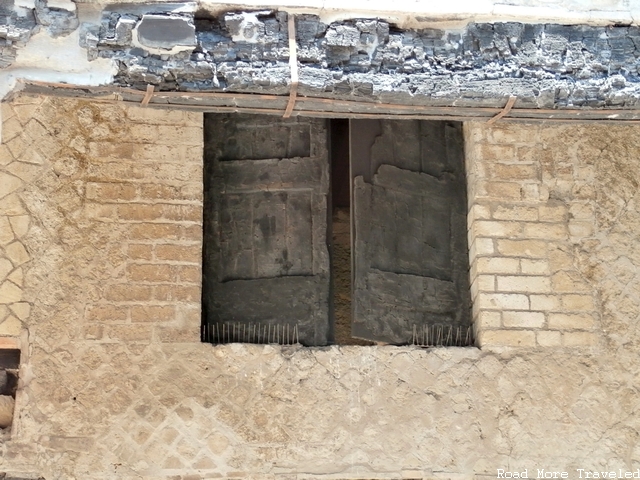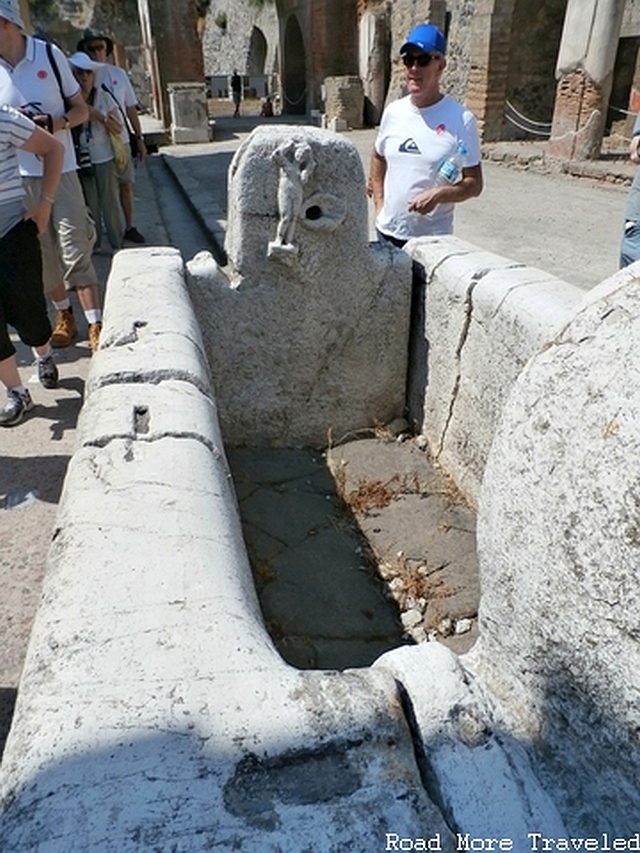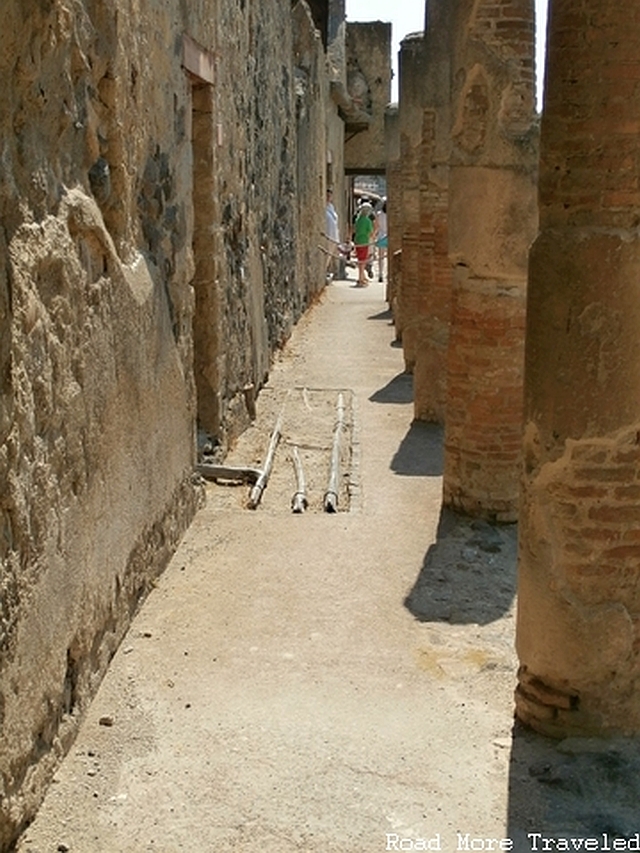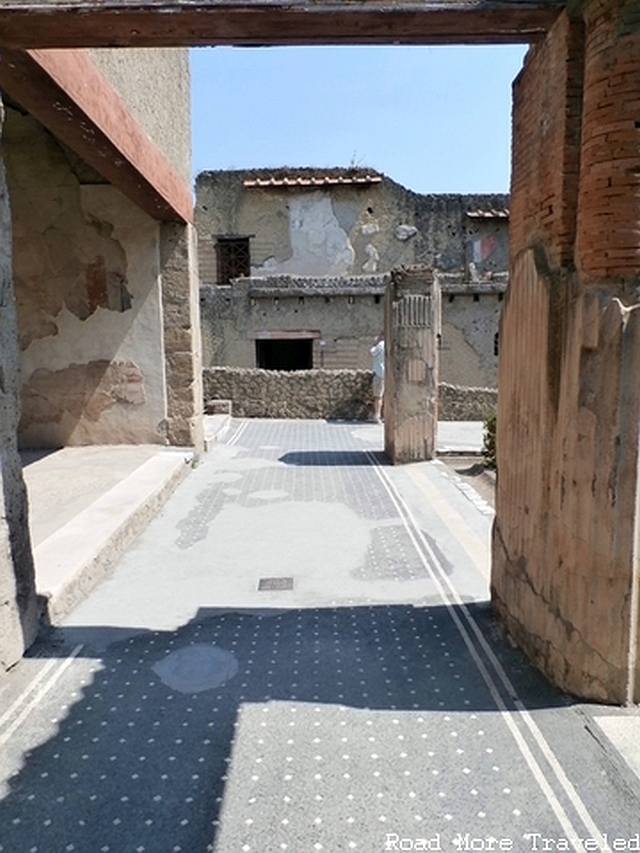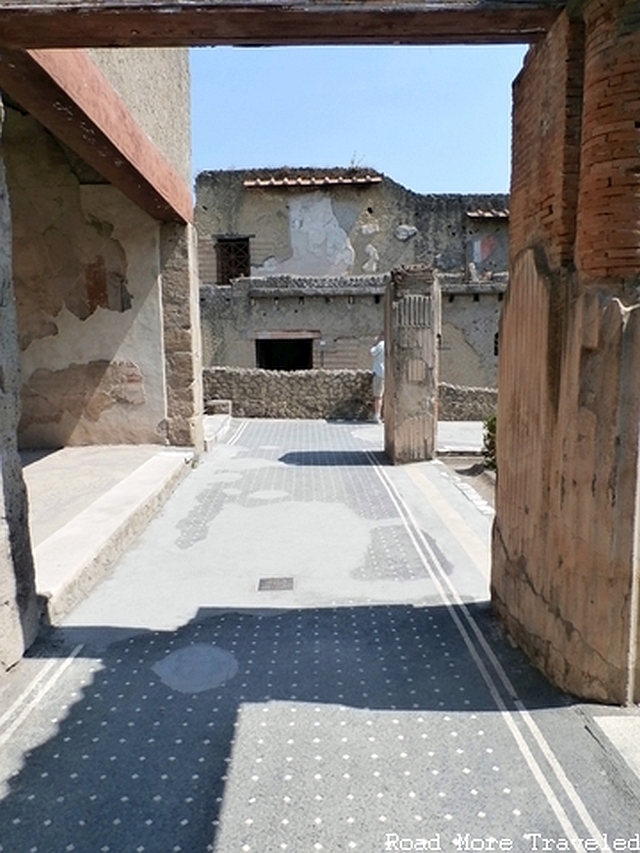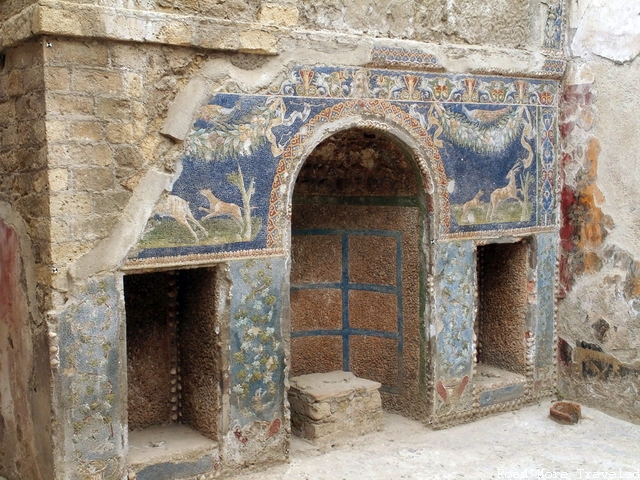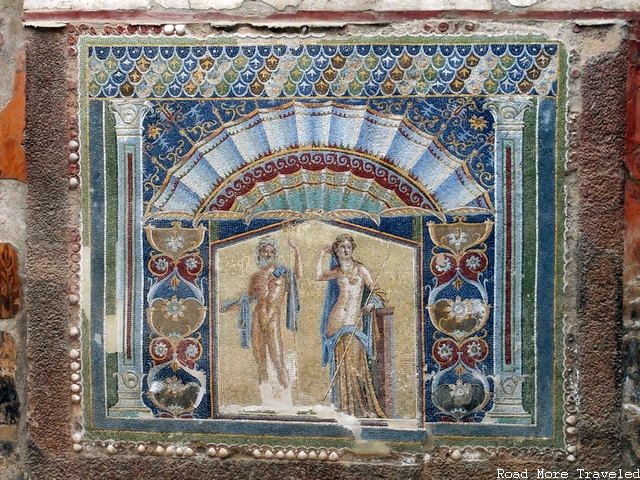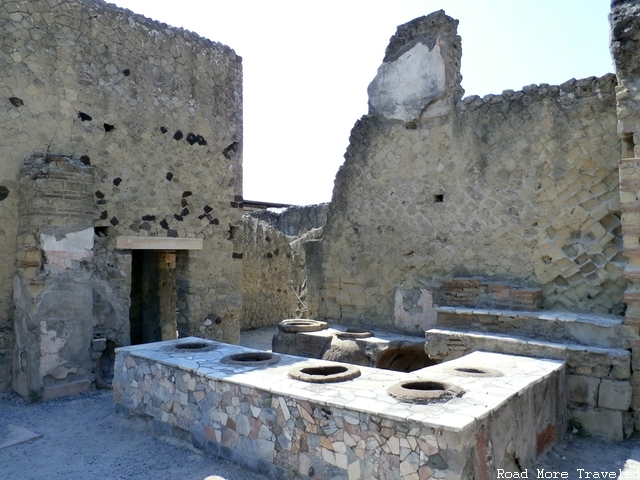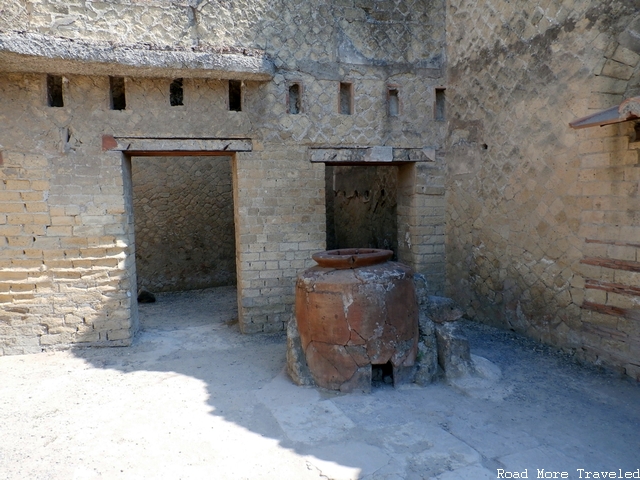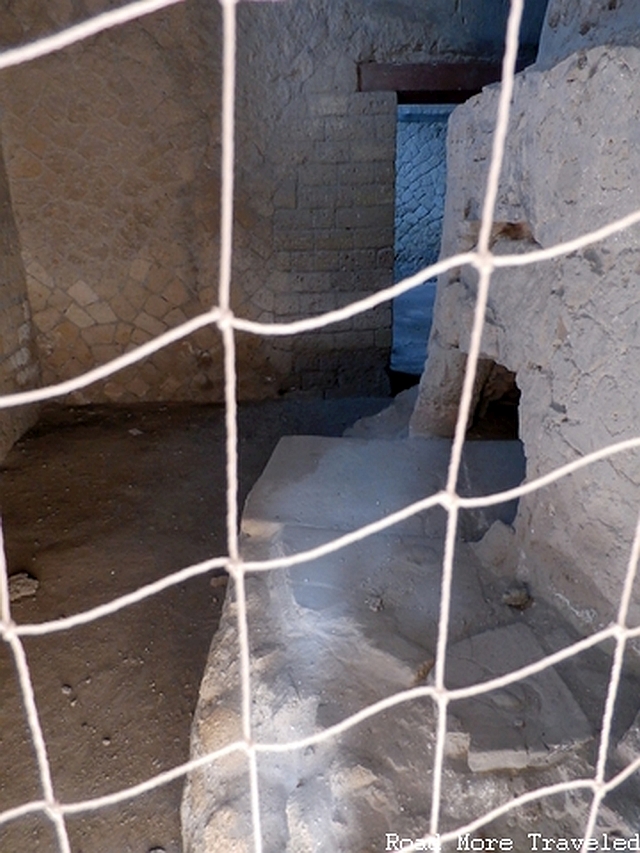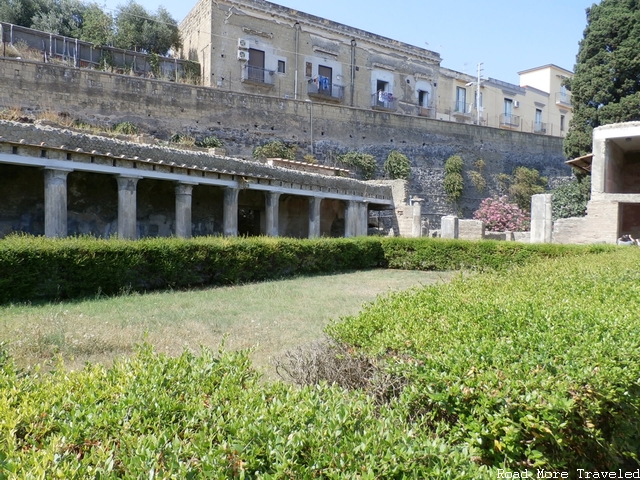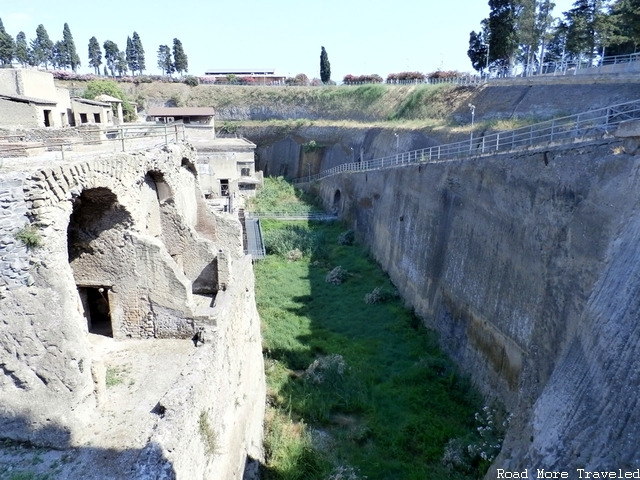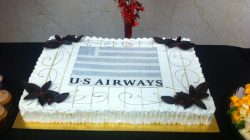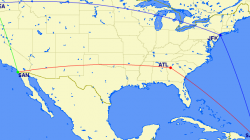It was hard to believe, given that we’d just boarded the Emerald Princess six days prior. But as we approached our final port, it was almost time to say goodbye to both our cruise and to the wonderful nation of Italy. That last port would be Naples (Napoli).
Perhaps best known as the birthplace of pizza, some regard Naples itself as a dump. Most think of it as a starting point for Pompeii, Sorrento and the Isle of Capri, and the Amalfi Coast. That characterization is unfair, though; while it does contain several ugly industrial areas, the city itself is also home to a robust historic city center.
The rest of my family had a full-day tour of Pompeii and the Isle of Capri on the itinerary. My wife and I, though, decided to visit the ruins of the other big town destroyed by Vesuvius, Herculaneum. (We visited Pompeii and Isle of Capri on a previous trip.) Our tour didn’t depart until 1:15 P.M., so we decided to spend the morning walking around Naples. And hopefully enjoy a couple of slices of the city’s famous pizza.
Date of Visit: Friday, July 3, 2015
The City of Naples
When arriving in Naples by cruise ship, beware that there are two cruise ship docks in town. The main one is directly across from the historic city center. Tthere is also a satellite dock roughly 3/4 of a mile to the east. The cruise line will typically offer a free shuttle to and from the main dock, which takes about 5 minutes. The distance isn’t far, so you can walk it, but Naples can get toasty in the summer. The neighborhood between the two docks is also kind of shady, so I recommend using the shuttle.
If you prefer to explore on your own, you can find numerous tour guides and taxis for hire at the main dock. Most prices, aside from group tours, are negotiable. Make sure you agree on a price BEFORE getting in the tour vehicle or taxi, though. Herculaneum is roughly 20-25 minutes away, Pompeii 30-40, and Sorrento an hour to an hour and 15 minutes. You can also take the Circumvesuviana commuter train to all three, which will cost EUR 2.50 each way to Herculaneum, EUR 3.20 to Pompeii, or EUR 4.50 to Sorrento. You can reach the Isle of Capri via ferry either from Sorrento, or directly from Naples (roughly EUR 12-20 from either city; click here for more information).
Our ship docked at the remote dock, which meant a short bus ride to the main dock (the Stazione Marittima). It’s a very short walk from there to the city center, though you have to run an annoying gauntlet of taxi drivers and tour guides trying to sell you a tour first. Just cross the main street in front of the port, though, and you reach the first marvel of the city, the imposing Castel Nuovo.
King Charles I of Anjou began construction of the castle, also known as Maschio Angioino, in 1279. Various add-ons appeared over the ensuing 500 years or so. Though more than 700 years old itself, the castle earned the “Nuovo” moniker because there are actually two even older castles in Naples, the Castel dell’Ovo and Castel Capuano. As you can see from the design, the Castel Nuovo was as much fortress as it was royal residence. Its location overlooking the entrance to the Bay of Naples gave it an especially strategic defense position. Today, just as in centuries past, you walk through the castle gate to enter the historic city center. The street quickly brings you to a circle featuring the Chiesa di San Ferdinando (the second building from the right) and a handful of other beautiful historic buildings…
…and then the magnificent Piazza del Plebiscito and Basilica Reale San Francesco di Paola.
Both the Piazza and the Basilica are relatively “new” as European landmarks go. The Piazza del Plebiscito derives its name after the October 2nd, 1860 plebiscite where Naples joined the Kingdom of Italy. Its origins, along with the Basilica, date back a little more than 50 years prior. Then, King Murat of Naples, brother-in-law of Napoleon, planned the square and church as a tribute to the French emperor. The main building resembles the Pantheon in Rome, but the basilica’s most prominent feature are the semi-circular wings that extend out on either side, providing for a striking panorama as you enter the square. Entrance to the basilica is free, and there are several pieces of religious art inside. The Royal Palace of Naples is on the opposite side of the square. Unfortunately, construction ongoing on the exterior made it impossible to get a decent photo.
Next, we headed south towards the waterfront and the Castel dell’Ovo.
Close-up view
Distant view from the ship
The name literally translates to “castle of the egg”. Legend has it that the Roman poet Virgil hid a magical egg in the dungeons of the castle. According to the legend, if the egg were destroyed, the castle would have been destroyed with it. A series of disasters would then befall the city of Naples. Though a fortification has existed on the site since the 6th century B.C., the current castle was built by the Normans in the 12th century. It reached its current and final form in the 15th century.
Incidentally, if you’re hungry, a fishing village known as Borgo Marinaro popped up just to the east of the castle. You can find a marina and several seafood restaurants there. If you look closely in the photo above, you can see the small fishing boats, and even a couple of fisherman, milling about – so I bet the food is fresh and tasty. The waterfront walkway passing in front of the castle also provides a nice view of the city.
For a leisurely stroll back to the city center, follow the waterfront a few blocks to the northeast, make your way to the mouth of the Vittoria Tunnel, and continue along the Via Domenico Morelli. Eventually, the street, will curve to the right, and you will find a pedestrian mall along Via Chiaia. Follow this all the way back to the Piazza del Plebiscito; along the way, you’ll find a mix high-end clothing stores and small shops selling cheap trinkets. And, of course, plenty of beautiful old buildings.
Chiesa di Santa Caterina a Chiaia, dating to the 16th century
Just a random pretty building typical of the old city
A gate along the pedestrian mall
We were really hoping to get some pizza before heading back to the ship, but unfortunately, every place we came across didn’t open until noon, and it was only a few minutes past 11. Since we had to meet our tour at 1:15, and we had to take the shuttle back to the satellite pier, we couldn’t wait that long, and so just headed back to the ship. Bummer. But we did catch this nice view of Mount Vesuvius on the way back.
The Ancient City of Herculaneum
Speaking of Vesuvius, we headed in that direction for our tour of the ruins of Herculaneum. Though usually overshadowed by its sister city, Pompeii, the ruins of Herculaneum are actually better preserved. Also, as a considerably wealthier town (it was a beach resort of sorts for wealthy Romans), it provides some interesting contrasts to Pompeii. Thus, I suggest visiting both if you have time. Similar to Pompeii, the eruption of Vesuvius in 79 A.D. destroyed Herculaneum, but its demise was actually quite different.
Unlike Pompeii, the first eruption on the afternoon of August 24th didn’t actually destroy Herculaneum. In fact, because winds carried most of the ash southeast and away from the town, little damage occurred. The eruption caused most inhabitants to flee, however. It wasn’t until the following night that a series of pyroclastic flows buried Herculaneum to a depth of nearly 20 meters. Though most of the residents fled, it is believed that roughly 300 persons were trapped in the flows. But unlike Pompeii, no human remains can be seen on-site. Though excavations have occurred on-and-off since the 18th century, only a small portion of the townsite has been excavated so far.
Before proceeding, I’ll state the obvious – our tour lasted for a little under 3 hours, which while enough to see the town’s highlights, isn’t nearly enough to see the entire site in detail. If you’d like a more in-depth experience, I suggest traveling here on your own, spending 4-6 hours, and either doing a self-guided tour or hiring a guide. Beware that it can get quite hot here in the summer, with temperatures exceeding 90 degrees with high levels of humidity, and shade can be scarce inside the site. Carry lots of water, in other words.
As for the name, legend has it that the god Hercules founded both the town and Vesuvius, hence the name. Historians generally think that the Greeks settled the city, with Roman control not occurring until 89 B.C. And of course, the inhabitants worshipped Hercules. This one…
Not this one…
Anyway, one thing you will notice pretty much from the start – unlike the ruins of Delos, Herculaneum is laid out in a clean grid pattern, with a series of nearly arrow-straight streets extending north-south and east-west, typical of Roman cities.
The first major feature we visited was the Roman bathhouse. The first room is a sauna room, replete with a well-preserved sink at one end.
Between the sauna room and the actual bath is a striking mosaic of the god Poseidon. This struck me as a rather odd place to locate a floor mosaic, but it’s still really cool. If you look closely, you can also see where the floor has warped somewhat. The mosaic itself is still in relatively good shape, though.
And finally, the bath itself. Marble baths were apparently the in thing 2,100 years ago. Funny how style has gone back to the future in that regard. Anyway, it’s hard to gauge the scale in these photos, but this tub is huge, probably large enough to easily hold half a dozen people at once.
Next was the College of the Augustales. This wasn’t a “college” as you would ordinarily think of it, however; it was a meeting place for the cult of the Roman Emperor Augustus. The building contains several nicely preserved frescoes, mostly representing scenes from Roman mythology. A sculpture was most likely located in the arch in the center of the photo, but what it might have been is not known.
After leaving the College, you reach the main street of Herculaneum, the Decumanus Maximus. First of all, you can see just how remarkably wide this commercial street is, as wide or wider than most modern city streets today.
As the main commercial street, several businesses can be found here, and even original wooden shutters in the second photo.
The street also features a fine example of a Roman fountain, and on a side street heading south, remains of lead pipes that constituted part of the town’s indoor plumbing system. Just let that sink in for a second – a town with running water more than 2,000 years ago.
Just off the main street is one of the town’s most luxurious villas, the House of the Black Hall. This house is built around a large courtyard, featuring black mosaic tile throughout.
Perhaps the finest villa in the town, though, is the House of the Neptune Mosaic. Though not the largest house in Herculaneum, the interior features a remarkably well-preserved mosaics, one featuring a hunting scene on a fireplace mantle, and the other of Neptune and Amphitrite. This house, perhaps more than any other, gives visitors a good idea of the relative wealth of the town’s residents.
The last major building we visited was a classic bakery. You can imagine the first room as the “display case” of sorts, where residents would assemble each morning to purchase breads and pastries.
Here you can see a large, well preserved piece of pottery, with what I presume was the kitchen area behind the doors.
And just for Brad, an ancient Roman toilet.
On our way out, while we didn’t stop to see it, we passed by the House of Argus, notable for its columns out front and its large, public courtyard.
As we left the site, we passed what used to be the waterfront district of Herculaneum. The arches used to be boathouses; the beach has since moved back roughly 1/2 a mile.
If you’re wondering how I would compare Herculaneum to Pompeii, my answer is, it’s really difficult to compare, because they represent two very different perspectives of Roman society. The Pompeii site is larger and was the more working class town, and of course, you have the haunting remains of humans frozen in place and time when the eruption hit. Herculaneum was considerably wealthier, with more ornate villas, and is arguably better preserved because the eruption itself did not affect the town directly. It’s also considerably less crowded, especially during peak seasons. If you have time, I’d recommend seeing both to experience both perspectives.
That does it for our cruise, but in my next post, join me for a flightseeing tour from Rome to London as we prepare to head home.
Note: this post is part of my multi-part trip report series about my wife and I’s trip to Europe in June/July, 2015. Read the trip report introduction for an index and background about our trip.
Photo of Hercules (the God, not the cat): Hercule et Lichas d’A. Canova (GNAM, Rome), by Jean-Pierre Dalbéra, via Flickr Creative Commons, Attribution 4.0 International (CC BY 4.0).


